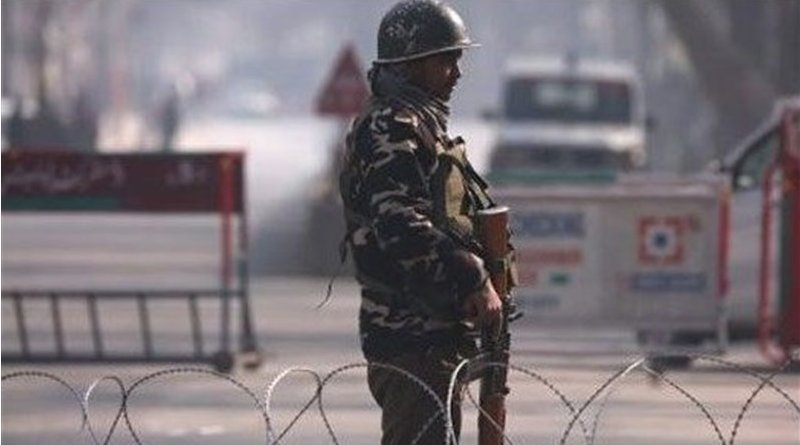Militancy In J&K: An Annual Review – Analysis
On 15 January 2024, the Indian army chief said that militancy in Jammu & Kashmir (J&K) was under control. Before that, the home minister indicated that the Bharatiya Janata Party (BJP)-led government at the Centre had been successful in controlling terror in J&K. Both these statements are at best directed at boosting the morale of security force personnel and script a narrative that appeals to the partially informed. The on-ground situation depicts a different story.
In 2023, according to the J&K Police, 14 targeted attacks on civilians, as compared to 31 in 2022, took place. A total of 12 civilians and 76 militants were killed. The figures in both these categories were significantly less than the 2022 ones, buttressing official claims of success. The police claim that only 20 local youths joined militancy in 2023, as compared to 130 in 2022. While this can be interpreted as a breakdown in the militants’ recruitment abilities, it also indicates a continuation of more foreigners among active militants, in the foreign-local recruitment ratio. Of the 76 militants killed in 2023, 55 were foreigners (Pakistanis).
Whether this reduction in numbers can be interpreted as a loss of local support for militancy, however, is debatable. Government claims of the absence of public protest and stone-throwing incidents by youths as indicators of peace coexist with claims of the existence of widespread public despair in the region. While the state administration has certainly succeeded in preempting any incident of dissent and public outcry, these have been achieved through instruments such as the repeated shutdown of internet and mobile phone services “in the interest of sovereignty and integrity of India, the security of the State and for maintaining public order.” While there has been a decline in such incidents as compared to previous years, accompanying shutdowns have also been imposed in Jammu’s Rajouri, Poonch, and Kishtwar districts. Moreover, the lack of forward movement in restoring the political process continues to be contentious between the ruling BJP and the Opposition parties.
The dominance of Pakistani militants certainly makes militancy in this erstwhile state a wee bit deadly. Experience shows that while most of the local recruits have a short life span and are mostly neutralised within a month of their recruitment, the better-trained and experienced foreign militants survive longer and add potency to the fledgling violent campaign. At the end of 2023, the security establishment took credit for the total number of active militants going down to only 31. Similar claims—of reducing the number of active militants to “double digits”—had been made in 2022 as well. Local recruitment as well as consistent cross-border infiltration has prevented the security forces from bringing the numbers down further. Further, these numbers don’t consider the many faceless and part-time terrorists about whom the security forces have limited knowledge.
The real and immediate challenge to peace in J&K in 2023 is repeated terror attacks in the Pir Panjal valley. This region has seen militancy once again over the past two years, after relative calm for a decade and a half. Linked to the phenomenon of the dominance of foreign militants and unabated infiltration bids from across the border, significant instances of terror in 2023 were concentrated in the twin districts of Rajouri and Poonch, proximate to the LoC. 28 of the 33 security force personnel who lost their lives in J&K in 2023 were killed in these two districts. Several attacks involved terrorists who took advantage of the mountainous terrain by hiding in caves and ambushing approaching forces. Until the end of the year, no firm plan to tackle this new phenomenon had been put in place.
Such terror attacks gravely militate against the official narrative of tranquility and may have thus led New Delhi to mount pressure on the J&K security establishment to deal with it firmly. Desperate measures, however, can be counter-productive. Three civilians, who were detained by the army in the Poonch-Rajouri area following a deadly ambush on an army convoy on 21 December, were found dead. Another five civilians were badly injured due to alleged torture by the security forces. A 29-second video that went viral on social media showed suspected army personnel stripping three men and putting chilli powder on them. Although the government announced compensation and army authorities acted swiftly in removing three senior officers from their posts, such incidents have revived the rather dormant narrative of rampant human rights violations by security forces.
New Delhi is nevertheless determined to ensure zero terrorism in J&K and solve the militancy problem by 2026. Following a high-level meeting on 2 January 2024, the army unveiled its plan to launch Operation Sarvashakti, a large-scale initiative on the lines of Operation Sarpvinash of 2003, which was launched against terrorists south of the Pir Panjal range. This operation will focus on pursuing militants suspected to be hiding in the dense jungles, mountains, and caves dotting the area. These coming weeks will test the effectiveness of this no-holds-barred approach.
- About the author: Dr Bibhu Prasad Routray is Director, Mantraya, and Visiting Fellow, IPCS.
- Source: This article was published at IPCS

